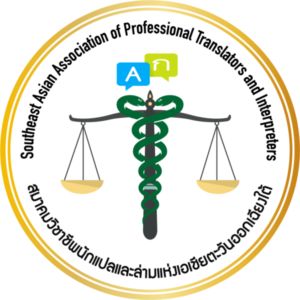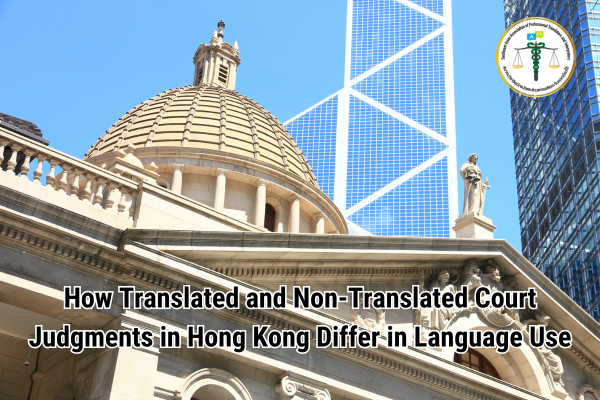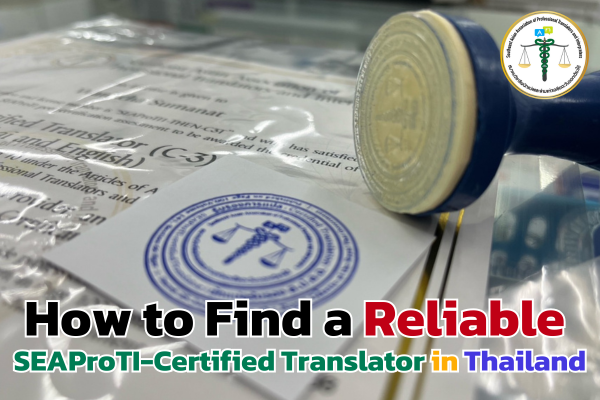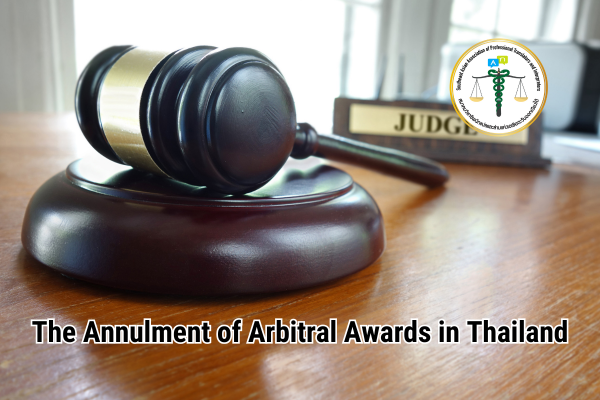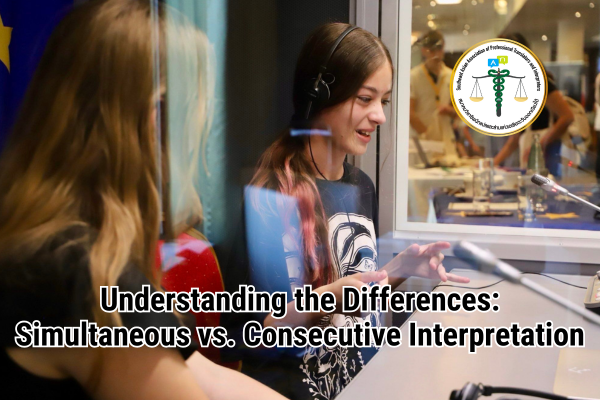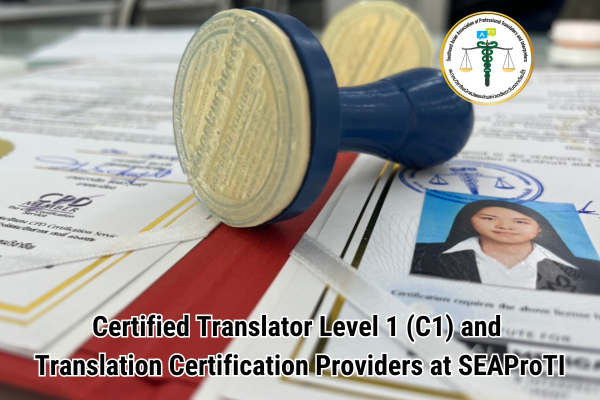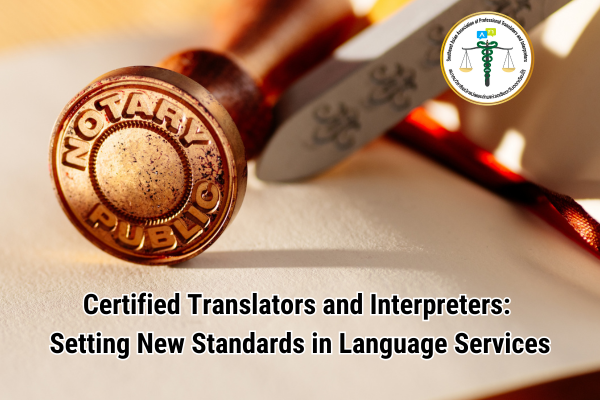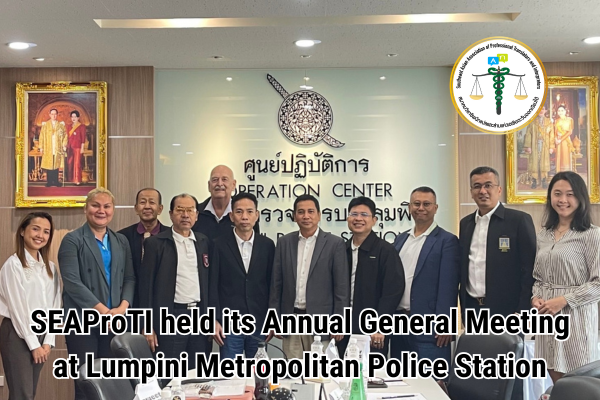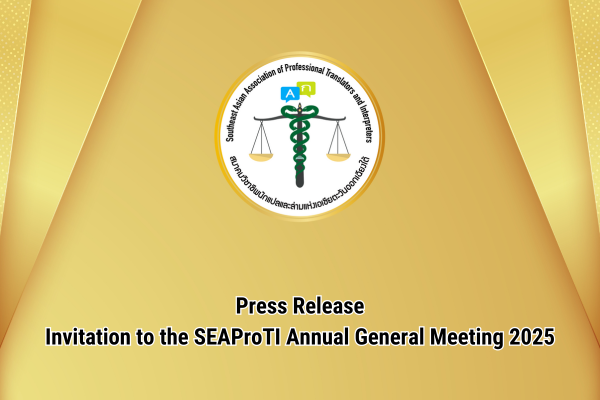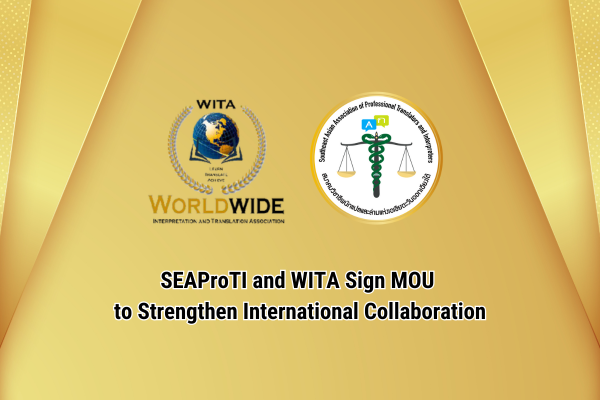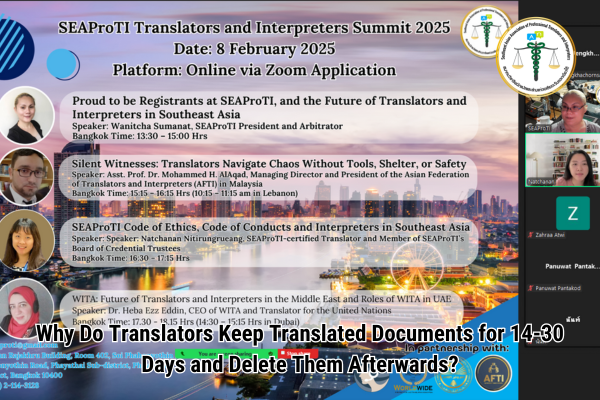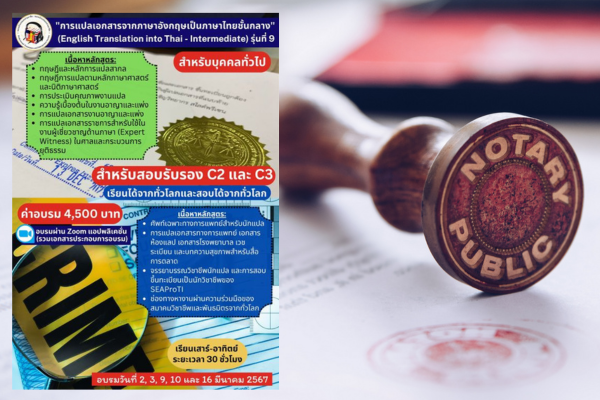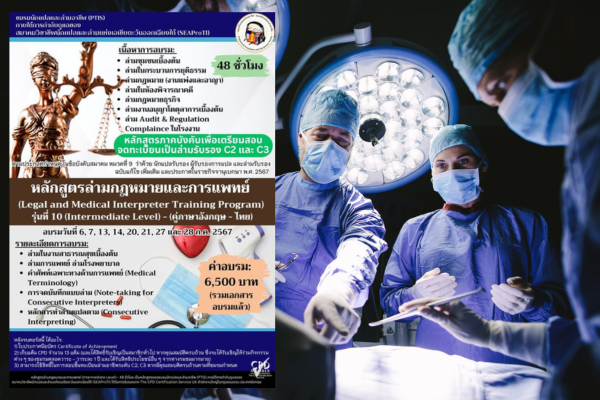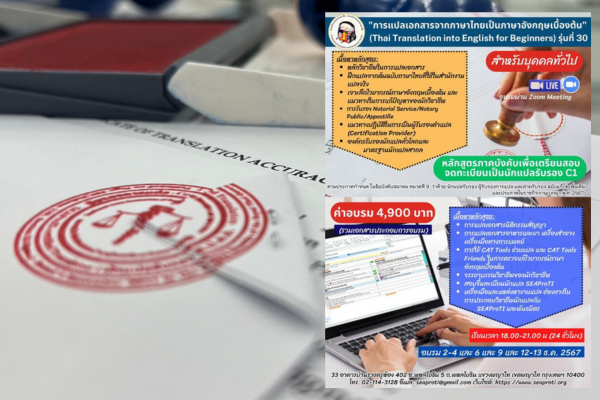How Translated and Non-Translated Court Judgments in Hong Kong Differ in Language Use
3 February 2026, Bangkok – Court judgments play a crucial role in the common law system, serving as precedents for future cases. In Hong Kong, a unique bilingual legal system operates where judgments can be issued in either English or Chinese, with some judgments being translated from Chinese into English.
One key linguistic feature in court judgments is epistemic modality, which refers to how judges express certainty, probability, or doubt in their reasoning. This includes words like might, probably, must, certainly, and phrases like I believe that… or It appears that….
This study compares English court judgments originally written in English with those translated from Chinese into English to examine how epistemic modality is used differently in each type.
1. Do Translated and Non-Translated Judgments Use Language Differently?
Yes! The study found that non-translated judgments use more epistemic modality markers than translated ones.
-
In non-translated judgments, judges frequently use first-person pronouns to express personal opinions:
- I think that…
- I believe that…
-
In translated judgments, the wording tends to focus on the court as an institution rather than the individual judge’s opinion:
- In our view…
- In our judgment…
This suggests that in English-language judgments, judges actively assert their opinions, whereas in Chinese judgments, the court’s authority is emphasized over the individual judge’s voice.
2. What Types of Epistemic Modality Are Most Common?
The study categorized epistemic modality into different certainty levels:
-
Moderate certainty (most common in both types of judgments)
- probably
- It appears that…
- It is likely that…
-
Low certainty (more frequent in translated judgments)
- might
- perhaps
-
High certainty (less common in both types, but slightly more frequent in non-translated judgments)
- must
- certainly
- There is no doubt that…
The findings suggest that translated judgments tend to reduce strong certainty and present arguments in a more cautious manner, likely due to translation influences from Chinese.
3. Why Do Translated Judgments Differ from Non-Translated Ones?
Several factors may explain these differences:
🔹 Influence of the Chinese Source Text
- Chinese court judgments tend to use more formal and concise expressions.
- When translated, some epistemic markers might be omitted, leading to a less varied use of modality in English.
🔹 Translation Strategies
- Translators may choose more neutral, standardized expressions, reducing the diversity of epistemic markers.
- Some modal verbs or subjective expressions may be replaced with institutional phrasing to maintain a more authoritative tone.
🔹 Differences in Judicial Thinking in Chinese vs. English
- In Chinese judgments, phrases like 本庭认为 (literally: “this court considers”) or 本席认为 (literally: “this chairperson considers”) are commonly used.
- These are typically translated into we consider or in our opinion, shifting away from I think or I believe, which are more common in non-translated English judgments.
Thus, while English judgments emphasize the judge’s reasoning, Chinese judgments highlight the collective authority of the court, and this distinction carries over into the translations.
Key Takeaways from This Study
- Legal translation is not just about converting words—it’s about transferring legal reasoning across languages.
- Translated judgments tend to be more neutral and institutionally framed, whereas non-translated judgments reflect more personal judicial reasoning.
- Translators must carefully preserve epistemic distinctions to ensure the translated judgment reflects the same level of certainty as the original.
Conclusion
This study highlights important differences in how epistemic modality is used in translated vs. non-translated English judgments in Hong Kong.
- Non-translated judgments use more personal expressions and convey stronger judicial opinions.
- Translated judgments tend to adopt a more neutral, institutional tone, reducing the judge’s personal voice.
These findings underscore how language shapes judicial reasoning and the unique challenges of translating legal texts in a bilingual common law system.
Rewritten from: Epistemic modality in translated and non-translated English court judgments of Hong Kong: A corpus-based study
SEAProTI’s certified translators, translation certification providers, and certified interpreters:
The Southeast Asian Association of Professional Translators and Interpreters (SEAProTI) has officially announced the criteria and qualifications for individuals to register as “Certified Translators,” “Translation Certification Providers,” and “Certified Interpreters” under the association’s regulations. These guidelines are detailed in Sections 9 and 10 of the Royal Thai Government Gazette, issued by the Secretariat of the Cabinet under the Office of the Prime Minister of the Kingdom of Thailand, dated July 25, 2024, Volume 141, Part 66 Ng, Page 100.
To read the full publication, visit: the Royal Thai Government Gazette
ความแตกต่างของภาษาที่ใช้ในคำพิพากษาศาลฮ่องกง:
แปลกับไม่แปลต่างกันอย่างไร
3 กุมภาพันธ์ 2568, กรุงเทพมหานคร – คำพิพากษาของศาลเป็นเอกสารสำคัญที่ใช้เป็นแนวทางสำหรับการตัดสินคดีในอนาคต โดยเฉพาะในระบบกฎหมายจารีตประเพณี (Common Law) เช่น ของฮ่องกง ศาลจะอ้างอิงคำพิพากษาที่ผ่านมาเพื่อประกอบการตัดสินคดีใหม่
หนึ่งในสิ่งที่น่าสนใจเกี่ยวกับคำพิพากษาคือ วิธีที่ผู้พิพากษาใช้ภาษา เพื่อแสดงความมั่นใจหรือความไม่แน่ใจในคำตัดสินของตนเอง เช่น การใช้คำว่า อาจจะ, น่าจะ, ต้อง, แน่นอน เป็นต้น ซึ่งสิ่งนี้เรียกว่า “ความเป็นไปได้เชิงญาณวิทยา” (Epistemic Modality)
งานวิจัยนี้เปรียบเทียบคำพิพากษาศาลฮ่องกงที่ แปลจากภาษาจีนเป็นอังกฤษ กับคำพิพากษาที่ เขียนเป็นภาษาอังกฤษตั้งแต่แรก เพื่อดูว่ามีความแตกต่างกันอย่างไรในแง่ของการใช้ภาษาในการให้เหตุผลทางกฎหมาย
1. คำพิพากษาที่แปลกับที่ไม่ได้แปล ใช้ภาษาต่างกันหรือไม่
จากการวิเคราะห์พบว่า คำพิพากษาที่เขียนเป็นภาษาอังกฤษโดยตรง ใช้คำแสดงความเป็นไปได้เชิงญาณวิทยามากกว่าคำพิพากษาที่แปลมาจากภาษาจีน
-
ในคำพิพากษาที่ ไม่ได้แปล ผู้พิพากษามักใช้คำที่แสดงความคิดเห็นส่วนตัว เช่น
- I think (ฉันคิดว่า…)
- I believe (ฉันเชื่อว่า…)
-
ในคำพิพากษาที่ แปลจากภาษาจีน ผู้แปลมักใช้ภาษาที่เน้นสถาบันมากขึ้น เช่น
- In our view (เราเห็นว่า…)
- In our judgment (ตามคำวินิจฉัยของเรา…)
แสดงให้เห็นว่า ในภาษาอังกฤษ ผู้พิพากษาเน้นความเห็นของตนเองมากกว่า ขณะที่ ในภาษาจีน ศาลมักให้ความสำคัญกับสถาบันมากกว่าตัวบุคคล
2. ผู้พิพากษาใช้คำประเภทไหนมากที่สุด
เมื่อตรวจสอบคำแสดงระดับความมั่นใจ พบว่า ผู้พิพากษาในทั้งสองกลุ่มใช้คำที่แสดงความมั่นใจในระดับปานกลางมากที่สุด เช่น
- probably (น่าจะ)
- It appears that… (ดูเหมือนว่า…)
- It is likely that… (มีแนวโน้มว่า…)
ส่วนคำที่แสดงความมั่นใจ ระดับต่ำ เช่น
- might (อาจจะ…)
- perhaps (บางที…)
พบได้มากในคำพิพากษาที่แปล ซึ่งแสดงให้เห็นว่าเมื่อนำคำพิพากษาภาษาจีนมาแปลเป็นอังกฤษ อาจมีการลดระดับความหนักแน่นลง ทำให้ดู “ไม่ฟันธง” เท่ากับคำพิพากษาที่เขียนเป็นภาษาอังกฤษโดยตรง
ส่วนคำที่แสดงความมั่นใจ ระดับสูง เช่น
- must (ต้อง…)
- certainly (แน่นอน…)
- there is no doubt that… (ไม่มีข้อสงสัยว่า…)
พบได้น้อยในทั้งสองกลุ่ม เพราะโดยธรรมชาติของกฎหมายแล้ว ศาลมักหลีกเลี่ยงการพูดอะไรที่ดูเด็ดขาดเกินไป เพื่อเปิดโอกาสให้มีการตีความหรือโต้แย้งในอนาคต
3. ทำไมคำพิพากษาที่แปลถึงแตกต่างจากคำพิพากษาที่ไม่ได้แปล
สาเหตุที่คำพิพากษาทั้งสองกลุ่มใช้ภาษาไม่เหมือนกัน อาจเกิดจากปัจจัยเหล่านี้
🔹 อิทธิพลจากภาษาจีนต้นฉบับ
- ในภาษาจีน คำพิพากษามักใช้ภาษาทางการที่กระชับและไม่ลงรายละเอียดมากนัก
- เมื่อนำมาแปลเป็นอังกฤษ อาจเกิดปรากฏการณ์ “ภาษาต้นฉบับส่องผ่าน” (Shining-through effect) ทำให้สำนวนภาษาอังกฤษมีลักษณะคล้ายภาษาจีน
🔹 วิธีการแปล
- นักแปลมักใช้สำนวนที่เป็นมาตรฐานมากขึ้น ซึ่งอาจทำให้ สูญเสียความหลากหลายทางภาษา ที่พบในคำพิพากษาอังกฤษดั้งเดิม
🔹 วิธีคิดของผู้พิพากษาในภาษาจีนและอังกฤษต่างกัน
- ในภาษาจีน คำพิพากษามักใช้คำว่า 本庭认为 (ศาลนี้เห็นว่า) หรือ 本席认为 (ข้าพเจ้าเห็นว่า) ซึ่งมีน้ำเสียงเป็นทางการมากกว่า
- เมื่อนำมาแปล อาจต้องเลือกใช้สำนวนที่ใกล้เคียงที่สุดในภาษาอังกฤษ เช่น We consider that… หรือ In our opinion… ซึ่งแตกต่างจากการใช้ I think… ในคำพิพากษาอังกฤษดั้งเดิม
ข้อคิดจากงานวิจัยนี้
- การแปลคำพิพากษาไม่ใช่แค่แปลภาษา แต่เป็นการถ่ายทอดกระบวนการคิดทางกฎหมายด้วย
- คำพิพากษาที่แปลจากจีนเป็นอังกฤษมีแนวโน้มใช้ภาษาที่เป็นกลางมากขึ้นและหลีกเลี่ยงการแสดงความเห็นส่วนตัวของผู้พิพากษา
- ผู้แปลควรให้ความสำคัญกับความหมายของคำที่ใช้ และรักษาระดับความมั่นใจในคำพิพากษาให้สอดคล้องกับต้นฉบับ
บทสรุป
งานวิจัยนี้ชี้ให้เห็นว่าการใช้ภาษาในคำพิพากษาของศาลฮ่องกงมีความแตกต่างกันระหว่าง คำพิพากษาที่แปลจากภาษาจีนเป็นอังกฤษ กับ คำพิพากษาที่เขียนเป็นภาษาอังกฤษโดยตรง
- คำพิพากษาที่ไม่ได้แปล ใช้ภาษาที่เน้นความเห็นส่วนตัวของผู้พิพากษาและมีความหนักแน่นมากกว่า
- คำพิพากษาที่แปล มีแนวโน้มใช้ภาษาที่ลดความเป็นตัวบุคคลลง และเน้นสถาบันหรือศาลเป็นผู้ให้เหตุผลแทน
งานวิจัยนี้เป็นตัวอย่างที่ดีว่าภาษาไม่ได้เป็นเพียงเครื่องมือสื่อสาร แต่ยังสะท้อนแนวคิดทางกฎหมายและวัฒนธรรมของผู้ใช้ภาษาด้วย
รีไรต์มาจากบทความ: Epistemic modality in translated and non-translated English court judgments of Hong Kong: A corpus-based study
เกี่ยวกับนักแปลรับรอง ผู้รับรองการแปล และล่ามรับรองของสมาคมวิชาชีพนักแปลและล่ามแห่งเอเชียตะวันออกเฉียงใต้
สมาคมวิชาชีพนักแปลและล่ามแห่งเอเชียตะวันออกเฉียงใต้ (SEAProTI) ได้ประกาศหลักเกณฑ์และคุณสมบัติผู้ที่ขึ้นทะเบียนเป็น “นักแปลรับรอง (Certified Translators) และผู้รับรองการแปล (Translation Certification Providers) และล่ามรับรอง (Certified Interpreters)” ของสมาคม หมวดที่ 9 และหมวดที่ 10 ในราชกิจจานุเบกษา ของสำนักเลขาธิการคณะรัฐมนตรี ในสำนักนายกรัฐมนตรี แห่งราชอาณาจักรไทย ลงวันที่ 25 ก.ค. 2567 เล่มที่ 141 ตอนที่ 66 ง หน้า 100 อ่านฉบับเต็มได้ที่: นักแปลรับรอง ผู้รับรองการแปล และล่ามรับรอง

